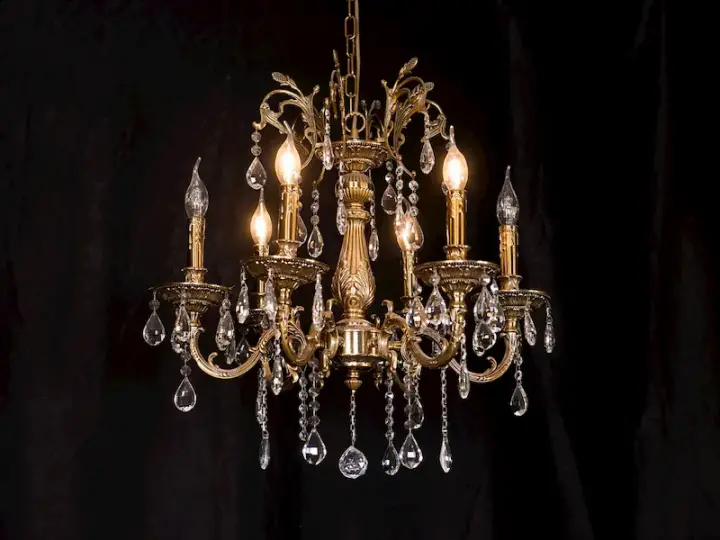How to Make Normal Lamps Smart Effortlessly
Updated on 22nd Oct 2020 16:03 in General, IoT, Smart
Smart bulbs are a common way of bringing enhanced control to any area in the home without breaking the bank. By including a small circuit board within the base of the bulb, they can wirelessly communicate with a controller such as a phone or a hub. They report their state back to the controller and accept commands, such as increasing the brightness or turning off. The convenience of simply screwing in the device makes it immensely popular, and a common question is: do smart bulbs work in lamps? The answer is mostly yes.

Disclaimer: This post contains affiliate links. As an Amazon Associate, I earn from qualifying purchases.
Table of Contents
Do smart bulbs work in lamps?
The short answer is yes! In fact, this is one of the best ways you can use smart bulbs. In my post about smart switches vs smart bulbs, I explained that bulbs aren't the best for main ceiling lights. There are several reasons for this, but the biggest ones are that they require a constant source of power, which can be difficult when there is a switch on the wall waiting to turn it off, and that they don't always fit well in ceiling fixtures that have multiple sockets. Almost all of these issues are resolved when using them in a lamp, rather than a primary room light.
When it comes to keeping constant power applied to the bulb, it is a lot easier to do with a lamp. While some lamps might even have more than one switch, they are usually less prominently placed, allowing you to tape it over and tuck it away without creating an eyesore on the wall. Even without tape, it's a lot less likely someone will go find the hidden switch for a lamp than it is that they will press the big button on the wall. Since a lot of smart bulbs can be obtained very cheaply, lamps are an excellent way to leverage the technology without creating problems for your self.
The final consideration is safety. One of the biggest reservations about smart bulbs used in primary lighting is that they might not work when you need them to, such as during an emergency. As many of them won't work properly without a solid connection to the hub, you might find that they won't turn on when you need them to the most. It's worth mentioning that some more expensive bulbs will turn on to full brightness if they can't communicate to the hub, as a safety measure. Despite that, this can still be a huge inconvenience when something goes wrong, and they turn on in the middle of the night. As lamps aren't usually the main source of light, you can accept more risk with them.
Do smart bulbs work in all lamps?
No! That's not to say that they can't work, just that in some situations it will be very difficult or impractical to do so. In my article on using multiple bulbs in a single fixture, I covered how these problems can be resolved. At the end of the day, some lamps are just not practical to use either because they have a strange shape or because they have too many light sockets. There isn't much you can do when the bulkier smart bulb doesn't physically fit in the lamp, but even in situations where the lamp has too many sockets, the solution is not always an easy one.
Fitting more than one smart bulb in a single lamp is always a pain as a result of the fact that each one has its own controller built-in that doesn't necessarily know about the other bulbs. It would be great if there were bulbs that could be told during setup that they are a part of the same fixture, but sadly most products do not offer this functionality. The only way to turn on the entire lamp at once is to group all of the individual bulbs together using groupings or some similar feature. Depending on the controller you are using, this can be a real pain to get working correctly, not to mention you are relying on the hub to operate them all at once.

What's the best way to use smart bulbs?
There are a lot of different ways to use smart bulbs, but some ways are a bit better than others. As we mentioned earlier, there are quite a few problems with using them in a ceiling lamp or any sort of permanent lighting fixture. Issues like the possibility of turning off the power via the main switch accidentally are undoubtedly annoying and result in solutions like "taping the switch". While these solutions certainly work, we can all agree they are far from the most elegant thing and might not even stop a determined guest from flicking the switch. The fact is most people are used to pressing a button on the wall to turn on a light and changing that with a smart bulb is going to cause problems as they adapt to this system.
Even then, unless these people live with you, it is highly likely they will go back home and use their lights the way they always have, with a switch. They will quickly forget that in your house, switches are a no go due to smart bulbs. Clearly, this problem is serious and is the main reason I recommend sticking with lamp fixtures for the best experience. As they plug directly into the wall, it is a lot easier to ensure that the power remains constantly on. Between hiding away the switch and taping it in the "on" position, you will undoubtedly have an easier time with a lamp. Overall, they are ideal for situations where you want to add additional lighting as opposed to a primary light.
How to make incompatible lamps smart?
As mentioned before, some lamps are simply not compatible with smart bulbs. Either it has too many sockets or simply that it is shaped in a weird way that won't allow the installation of a bulkier bulb. There are ways around this, although you won't be able to get the RGB effects using this technique. A good way around these problems is to fit the lamp with regular bulbs and to make use of a smart dimmer plug to control it. If you don't need to control the brightness of the lamp, a regular smart plug will work just fine too! Let's have a look at some products that can help with these situations.
Leviton Decora Smart WiFi Plug-In Dimmer
This smart plug works the same as any other, except of course that it offers a dimming feature. The advantage here is that a single one of these can control the whole lamp, which might have several bulbs in it! You can dim up to 100W of CFL and LED bulbs and 300W of incandescent bulbs. In case you have never seen what 100W of LED lighting looks like, it takes roughly a 15W LED to create the same light output of a 100W incandescent. That means that 100 watts of LED light are going to be equivalent to around 6.6 100W incandescent bulbs. How's that for power efficiency?
By using this dimmer, it is possible to have some seriously bright lamps. Do not forget to check that LED bulbs are compatible with dimmers before buying them if you plan on using LEDs. All incandescent bulbs will work, but not all CFL and LED bulbs will. Another advantage of using this particular product is that it uses WiFi to connect to the internet and offer control from anywhere, without a hub. Finally, we can't forget that when smart bulbs break the whole thing must be replaced. Here only the cheap bulb can be changed while the controller continues to function without a problem.
Meross WiFi Smart Plug
Included here for its much lower price, this smart plug does not allow any dimming but will still turn things on or off just fine. I really like the Meross brand as they consistently provide high-quality products at a low price point. Unlike the previous mention, you can get 4 of these plugs for roughly the same price as one of the Leviton dimmers. Of course, they aren't the same thing, but if you can pass on having dimming control, you can save a lot of money while making your lamps smart. You can also run a lot higher power lighting through these, as they support a maximum of 16A, which is more than most electrical sockets can even provide.
As with the Leviton, these make use of a WiFi connection to communicate over the internet to a remote controller. This means you don't need a hub and can use them with Alexa, Google Home, and obtain remote control straight out of the box. An interesting feature for those who are sceptical of the cloud for smart devices is the compatibility with Apple's HomeKit. You can pair it with a hub and immediately get completely offline smart lighting, via HomeKit. If RGB effects and dimming control aren't things that are important for your lamp, then this is the way to go!
Summary
As we saw, smart bulbs can work in lamps, but not every situation will be practical. There are a load of different options for making lamps that are otherwise normal into smart lights that can really make your smart home come together. We also saw that there are some serious discounts available for those willing to forgo the fancier features such as RGB support or dimming. At the end of the day, it's important to realize that lamps are one of the best ways to make use of smart bulbs and so you should explore the different possibilities before deciding that one thing is better than the other. They each have their pros and cons, and there is no blanket recommendation for everyone!





